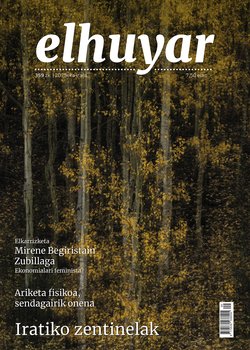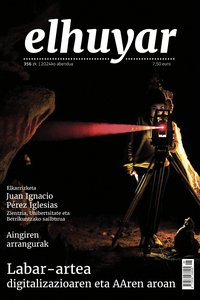A healthier grazing sheep’s cheese

The relationship between idiazabal cheese and university researchers is not that of this morning. for 20 years now, pastoralists and members of the Lactiker group of the UPV/EHU have been sharing knowledge: the cheesemakers knew all the details of this traditional work and the researchers wanted to know the biochemical aspect of this gastronomic treasure.
IRUNE AUDIKANA; Cheese Farm Basondo: These investigations were at first completely incomprehensible to us, a world outside of our own. They were interested in a product that was so normal for us... but it's not so normal, it's special. And this relationship has allowed us to improve our management, our diet, our production of cheese... to the point of obtaining a quality cheese.
RENOBALES MILL; Lactiker, UPV/EHU: According to the studies we have done in recent years, the results should be taken with caution, but it seems that the cheese made with grass milk is healthier for the consumer than the cheese made with the milk of the sheep in the wash.
In laboratory biochemical analyses, attention has been paid to the fat of cheese, among other things. In fact, cheese fat has a bad reputation, but there is a difference between some cheeses. For this reason, the fatty acids that make up the fat of the cheese have been identified and measured, both in sheep's milk and in cheese made from it.
BY LUIS JAVIER R. BARRON; Lactiker, UPV/EHU: It may seem simple, but the analysis of milk fat is complicated by the identification of more than 400 fatty acids, mostly in very small amounts. We can analyze 70 fatty acids, but we are not interested in all of them. We are interested in some of them and we pay special attention to them.
They analyze milk samples throughout the milking season to measure fatty acids, and after a few months they do the same with the cheese that has been made and honed with that milk.
The milk changes over the course of the season and one of the main agents is the sheep’s food. In the winter the herd is in the wash and feeds on forage, but by spring it is in the grass and eats grass. This is one of the hallmarks of the original sheep’s milk from idiazabal cheese, which is associated with grazing.
BY LUIS JAVIER R. BARRON; Lactiker, UPV/EHU: The most remarkable thing is that the fat in the milk changes, the feeding has a great influence. When you go to the pasture, when you eat fresh grass, the composition changes significantly.
When the sheep is in the pasture the fat changes, the concentration of unsaturated fatty acids increases significantly compared to the data in the wash.
But the fatty acids in cheese are not just nutritional elements, they are involved in sensory properties, that is, they influence the unique aroma and flavor of each cheese. The key to this is in the salt.
IRUNE AUDIKANA; Cheese Farm Basondo: One of the main ingredients is the salt cream, we use the homemade salt cream, made in the house itself. We do it with the stomach of the lambs, with the lambs of the milk. The main task of the curd is to curd the milk, but on top of that it gives the final product aromas and flavors.
RENOBALES MILL; Lactiker, UPV/EHU: All curds contain a protease that coagulates the milk. But, depending on the curd, it may also contain other enzymes that contribute to the aroma and flavor of the cheese. This homemade curd, mentioned by Irun, also contains a lipase that releases some fatty acids as the cheese digests. These fatty acids are very important for the smell and taste. And that’s why the homemade dessert with lipase gives a special touch to the cheese, that spicy taste of Idiazabal cheese that is not given by commercial dessert. Commercial rennet is also natural, but does not contain lipase.
IRUNE AUDIKANA; Cheese Farm Basondo: And it must also be said that the curd gives something distinctive to each cheese. Thus, each cheese belongs to each pastor, made by hand.
Buletina
Bidali zure helbide elektronikoa eta jaso asteroko buletina zure sarrera-ontzian











